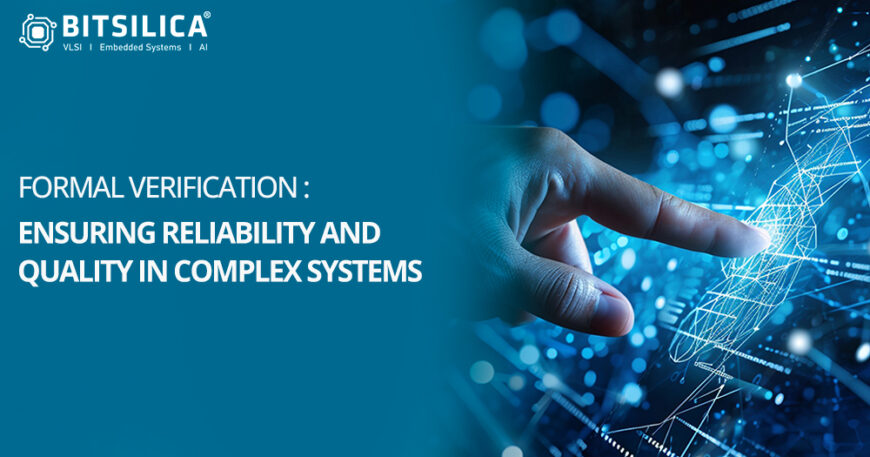Formal Verification: Ensuring Reliability and Quality in Complex Systems
Overview of Formal Verification:
Definition
Process
The formal verification process typically involves using formal verification tools that take a design and a set of properties or constraints as inputs and then analyze the design to ensure that it functions as expected under all conditions.
ation is used for both functional verification and performance validation. It provides a more accurate representation of the hardware by executing the design at or near real-time speeds, allowing designers to validate timing, power, and system-level interactions.
Key Aspects of Formal Verification
Importance
- Early Bug Detection: Formal verification catches bugs early in the design cycle, improving overall design quality.
- Comprehensive Verification: It systematically checks all possible conditions and states, ensuring even hidden bugs are identified and addressed.
Features
- Property Check: Formal tools automatically extract properties from a design and attempt to validate them under all possible conditions.
- Connectivity Check: These tools verify the connections between design modules or IPs within the larger system to ensure the overall system architecture is sound.
- Unknown Detection: Formal verification identifies unknown value states, such as ‘X’ and ‘Z’, that may lead to unpredictable behaviour.
- Condition Extraction: Tools automatically check for various conditions such as arithmetic overflows, out-of-bounds array accesses, full and parallel case statements, and multi-driver conflicts.
- Register Property Check: This tests the functionality and behaviour of registers within the design.
- Security Check: Formal tools verify data security features, ensuring that secure data is not accidentally or maliciously overridden by non-secure data.
Formal Verification Tools
Formal tools simplify the formal verification process, ensuring the design’s safety, accuracy, speed, and reliability. Utilizing formal tools for formal verification brings significant benefits.
Several formal verification tools are available on the market, each offering various features and capabilities:
- JasperGold by Cadence
- VC Formal by Synopsys
- Solidify by Averant
- Questa Formal by Mentor Graphics
These tools simplify the formal verification process and offer features such as graphical user interfaces (GUIs) to make the process more user-friendly.
Advantages and Disadvantages
Formal verification offers several notable advantages and disadvantages that impact the overall verification process. Understanding these pros and cons can help guide designers in effectively applying formal verification to their projects.
Advantages
✅Early Bug Detection: Formal verification catches bugs early in the design cycle.
✅No Test Bench Required: Eliminates the need for a dedicated test bench environment for bug detection.
✅Exhaustive Testing: Allows for comprehensive testing, including corner cases and uncommon scenarios.
✅Ease of Use: Formal verification tools provide intuitive interfaces for designers.
✅Reduces Verification Time: Accelerates the verification process and provides designers with greater confidence in the reliability of the design.
Disadvantages
❌Time-Consuming: As designs become more complex, formal analysis can take longer due to the state space explosion problem.
❌Challenges with Complex Data Paths: Formal verification may struggle with complex data paths and analog blocks.





